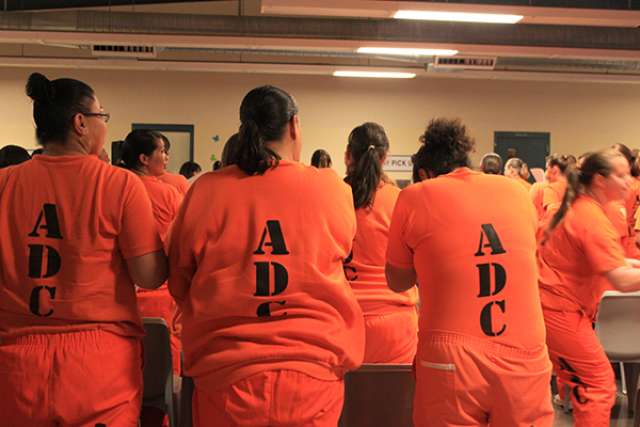People incarcerated in U.S. prisons tested positive for COVID-19 at a rate 5.5 times higher than the general public, according to a new paper co-authored by the UCLA COVID-19 Behind Bars Data Project and researchers at Johns Hopkins Bloomberg School of Public Health.
In their report, which was published today in the Journal of the American Medical Association, the researchers also found that the death rate of U.S. prisoners was 39 per 100,000 people, higher than the U.S. population rate of 29 deaths per 100,000. After adjusting for age and sex differences between the two groups, the death rate would be three times higher for prisoners compared to the general U.S. population.
"After months of collecting and analyzing data, the reality is clear: COVID-19 infects and kills residents of prisons in the United States at far greater rates than previously realized, and to have our results published in JAMA underscores the importance of these findings," said UCLA School of Law Professor Sharon Dolovich, who directs the COVID-19 Behind Bars Data Project and led UCLA's contributions to the study.
In arriving at their findings, the researchers analyzed data on COVID-19 infections and deaths that the UCLA project collected every day between March 31 and June 6. Sources of information included corrections department websites and supplementary media reports, encompassing all states, the District of Columbia and federal prisons.
The publication's co-authors also include 2012 UCLA Law graduate Grace DiLaura, a leader of the project's data-collection team, and Kalind Parish, a pre-doctoral research fellow with the project and co-lead of the data-collection operation. Co-authors from the Johns Hopkins Department of Health Policy and Management include lead writer Brendan Saloner and Julie Ward.
"Thanks to this incredible team effort, involving many volunteers, lawyers, public health experts and scientists who are aiming to illuminate the devastating effects of the pandemic in places where mainstream observers often fail to look, suffering prisoners may now get the attention — and the protection — they deserve," Dolovich said.
Dolovich created the UCLA COVID-19 Behind Bars Data Project in March with the help of UCLA Law student Keegan Hawkins, and she currently runs it in conjunction with project deputy director Aaron Littman, UCLA Law’s Binder Clinical Teaching Fellow. The aim is to track issues involving the pandemic and mass incarceration in prisons and jails, which have emerged as hotbeds of COVID-19 infection. Including expansive databases and other resources, the project has grown to include two full-time data science research fellows and more than four dozen volunteers. It has drawn widespread praise and attention from legal practitioners, scientists, government entities, advocates and more than 80 media outlets.



